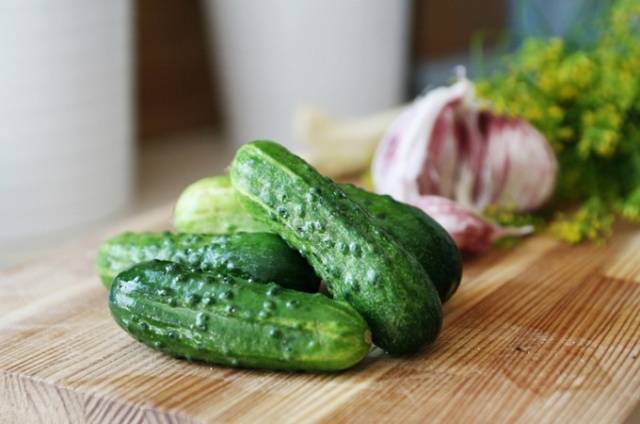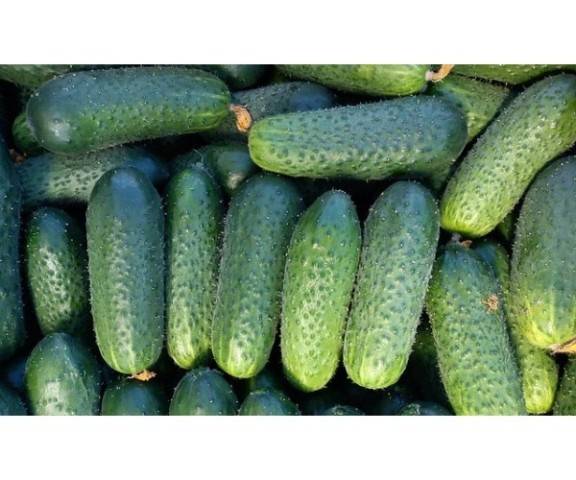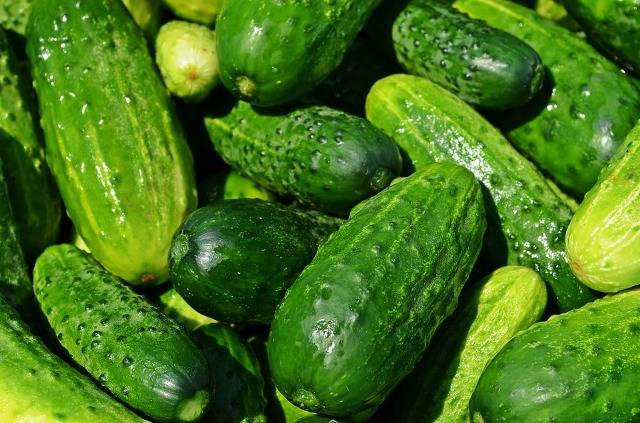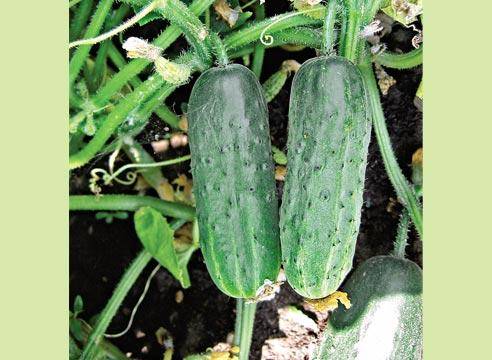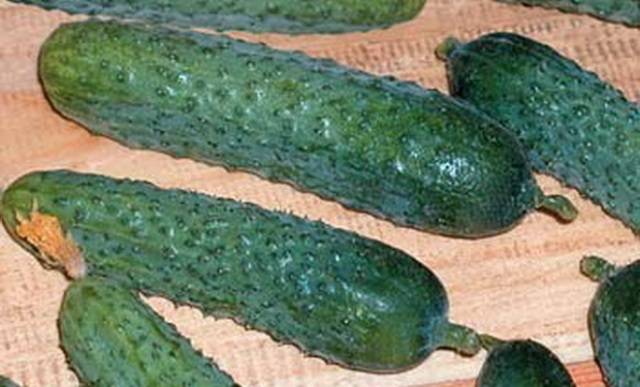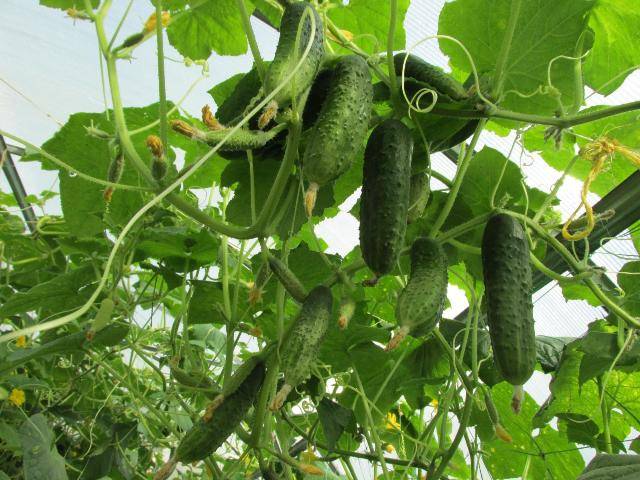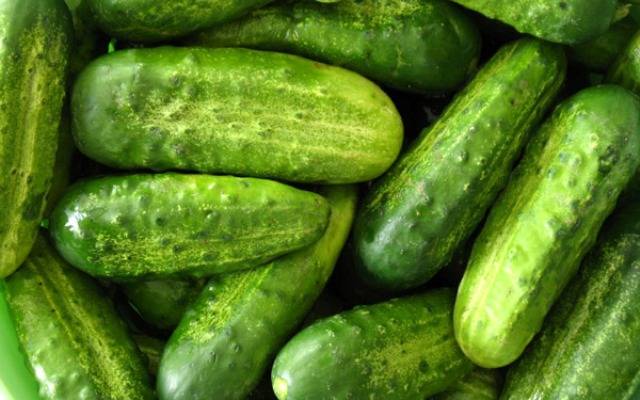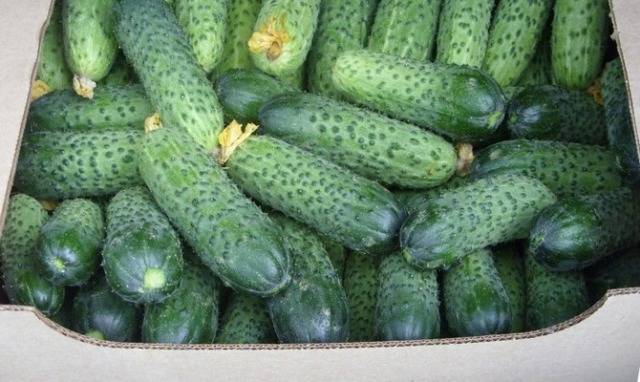Content
The desire of every amateur gardener is to see the result of his labor, and for gardeners this result is yield. When breeding new varieties of cucumbers, breeders pay special attention to two indicators - the resistance of new varieties to characteristic diseases and the number of fruits during the growing season. However, among all the variety of hybrids, there are those that hold leading positions in quality and yield.
The best yielding hybrids
When choosing seeds for powerful seedlings, and after a high yield of hybrids, be sure to pay attention to the presence of the F1 symbol on the package. It denotes that these seeds are the best in performance and are obtained by crossing two different varieties.
In addition, be sure to keep in mind that the hybrid must belong to the "early ripening" group and have a long growing season. Also pay attention to the ripening period of the cucumbers - its choice depends on the purpose of using the fruit. For example, if you want to get early fruits for salads, then you need to stop at high-yielding varieties of the spring-summer period. If the goal of growing is to preserve vegetables - choose hybrids with a ripening period "summer-autumn".
Seeds of fruitful cucumbers, highly appreciated by experienced gardeners:
Pickle F1
Shows good resistance to fungal and viral diseases, tolerates dim illumination of film greenhouses and greenhouses.
This early hybrid has established itself as the best when grown in film greenhouses and for outdoor use. The ripening period of the fruits is 1-1.5 months. The average size is 10-12cm. The fruits are dark green in color and have a dense skin.
Sparta F1
An insect pollinated hybrid intended for cultivation in open ground and in polycarbonate open-top greenhouses... Dense juicy fruits reach sizes up to 15 cm, perfect for salads, and for pickling and canning.
Zozulya F1
In greenhouses, long growing periods are maintained, and during the period of full maturation, up to 15-20 kg are removed from one bush.
Despite the fact that the variety is self-pollinated, the best early yields can only be obtained when growing the plant in open field conditions. Resistant to diseases of cucumber mosaic and olive spot.
Harvest varieties of cucumbers
Seedlings of these varieties are intended for both open ground and greenhouses. The only thing that needs to be taken into account in the growing process is that almost every of the presented species is insect pollinated.
Bush
The fruits are medium-sized (the weight of one fruit is from 80 to 100 g), but with proper care and feeding, up to 20 kg of cucumbers are removed from one bush during the growing season.
An early early ripening variety with an average ripening period of 1.5 months. The main feature is the bush growing method. The variety is universal, therefore it is used for preparing salads and canning, grown in open ground, greenhouses and greenhouses equipped with opening walls or a roof.
Voronezh
The variety is universal, suitable for canning, pickling and fresh consumption.
The variety belongs to the summer-autumn group, with a late ripening period.The seeds are grown in greenhouses, and then the seedlings are transferred to open field conditions. The plant is insect pollinated, but it feels equally good both in the beds and under the greenhouse film. During the ripening period, the cucumber reaches a size of 15 cm, weighing 100-120 g.
Pinocchio
High yielding variety, well tolerated by sudden changes in temperature. Fruit ripening period is 1.5 months. The plant is insect pollinated, therefore it is planted in open ground conditions. Early seedlings can be covered with a film for some time. Buratino is one of the varieties that have proven themselves well during transportation and long-term storage. That is why it is preferable for those gardeners who sell vegetables. On average, the weight of a mature fruit reaches 100-120g, with a length of 10 to 15cm.
Fruit-bearing varieties for cultivation in greenhouses
To obtain high yields in greenhouse conditions, it is necessary to choose seeds of early self-pollinated varieties. In addition, the plants must be resistant to low temperatures and diseases, tolerate low light well, and long growing seasons.
Among all the variety, the following can be distinguished:
Meringue F1
An early hybrid with a fast ripening period. From transplanting seedlings into greenhouse soil to full maturation, it takes 35 to 40 days. A distinctive feature of Merengi - cucumbers are large-knobby, saturated dark color, have average sizes - the weight of one fruit is from 80 to 100 g. The variety is resistant to cladosporiosis, powdery mildew, root rot typical of greenhouse plants.
Alekseich F1
The hybrid is not susceptible to infection with powdery and downy mildew, fungal infections.
A universal early maturing variety specially bred for greenhouse and greenhouse cultivation. Fruit ripening period is 35-40 days. The fruits are small (8-10cm) and weigh up to 100g, therefore they are used mainly for canning.
Benefit F1
An early hybrid with a high yield. Full ripening occurs within 40-45 days after transplanting the seedlings into greenhouse soil conditions. The average weight of the fruit is 100g, and the length does not exceed 12-14cm. The variety is resistant to fungal and viral diseases, retains marketable qualities for a long time in conditions of long-term storage.
Goosebump F1
Unusual early hybrid, characterized by bundle-like ovaries. This creates comfortable conditions for gardeners with bountiful harvests and long growing seasons.
The fruits have a large-knobby skin of a dark green color with small thorns, and excellent taste. The hybrid is resistant to diseases of powdery and downy mildew. Ripening period 40 days, fruit size - up to 100g.
Leaders of sells
Tumi
A high-yielding variety that allows you to get from one m2 up to 12-15 kg of cucumbers. Tumi is distinguished by its high endurance, unpretentious to lighting and regular watering.
The skin of the fruit is dark green, dense and bumpy. An interesting feature of the variety is that when tying the ovaries to a long stake, the crown of the bush can grow to an area of 2-2.5 m2... Ripening period - 45-50 days, average fruit length - 10cm.
Courage, Sigurd
The most productive varieties of cucumbers, which are the undoubted sales leaders in the agricultural markets of Russia. Seedlings are planted at a distance of 1.5-2m, since the varieties belong to the group shrubs... Seeds are planted in late spring or summer, the growing season is 40-45 days. During the yield period, up to 15 kg of cucumbers can be removed from one bush. Both the one and the second variety require a large amount of organic fertilizers, since the powerful and rapid growth of the plant quickly depletes even the most fertile soil.
Conclusion
In order to get a high-quality and large yield, take into account the growing conditions, the regularity of watering and feeding the plant with organic fertilizers. When choosing seeds, consider which variety or hybrid can best suit your wishes - the time of year and the amount of the harvested crop, the purposes of its use. Carefully follow the instructions for planting seeds and growing seedlings, most likely, seedlings will require separately prepared soil with components such as torus or humus.

